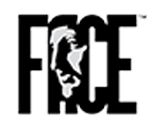BFA, MFA
Keystone College
Nathan Goldstein and the Education of Vision
The late Nathan Goldstein (1927-2013) was the author of several of the most important texts on traditional drawing, painting, and composition. Beginning with the acclaimed book The Art of Responsive Drawing (now in its 6th edition), and continuing with his Figure Drawing: The Structure, Anatomy, and Expressive Design of Human Form (in its 7th edition), along with five other widely-used texts or instructional resources on art, Goldstein influenced entire generations of students in this country and abroad.
A member of the National Academy of Design and Professor Emeritus at the Art Institute of Boston, Goldstein was also an influential presence in the classroom. During his career, he lectured and presented workshops at colleges and art schools in 38 states. His artwork has been exhibited internationally, and is in many public and private collections, including the National Academy of Design, the Boston Public Library Collection, the Arkansas Art Centre, and the Danforth Museum in Framingham, Massachusetts.
This paper examines Goldstein’s writings and artwork as a product of American Midwestern, midcentury, art instruction. Like many artists of his generation, Nathan Goldstein was a beneficiary of the GI Bill following his service in the Second World War. This allowed him to attend the Art Institute of Chicago, receiving his MFA from that school in 1953, and studying alongside such luminaries as Leon Golub, Jack Beal, and others. This fertile training ground gave legitimacy to figurative painting and sculpture, and enabled Goldstein to pursue his art beyond the reach of the New York School.
In the 1960’s, Goldstein’s teaching—and later his writings—stood as a bulwark against the sway of Abstract Expressionism and other modernist movements in art school and university programs. At the same time, however, his concern for the sensual and dynamic vitality of paint framed his paintings and pedagogy within the tradition of Rembrandt, Rubens, and even Cézanne.
The paper concludes with a discussion of Goldstein’s relationship to the Boston-area realists and figurative expressionists of the 1960’s, 70’s, and 80’s. Goldstein counted among his colleagues and friends the painters Sigmund Abeles, Jack Levine, and Hyman Bloom, and the sculptors Harold Tovish and John Wilson, among many others. The comradery and mutual influence of these artists produced one of the most vibrant centers for figurative art in the 20th century, and one whose influence continues to the present day.
About Drake
Drake Gómez is an artist, curator, and educator, currently serving as Professor in the Visual Arts Program at Keystone College in La Plume, Pennsylvania. His paintings and drawings have been shown in exhibitions throughout the US, in group and one-person shows.
A former director of the Linder Gallery at Keystone College, Professor Gómez has curated over 50 exhibitions of work by artists from throughout the U.S. and other countries, and has written numerous critical and interpretive essays on the work of contemporary artists. For his essays on contemporary art, he received the 2007 Arts Commentary Award from the Pennsylvania Council on the Arts. He is currently curating a national exhibition of paintings and drawings by the late Nathan Goldstein.
Professor Gómez holds a BFA in studio art from the University of Central Florida, and an MFA in painting from Cranbrook Academy of Art in Michigan.


